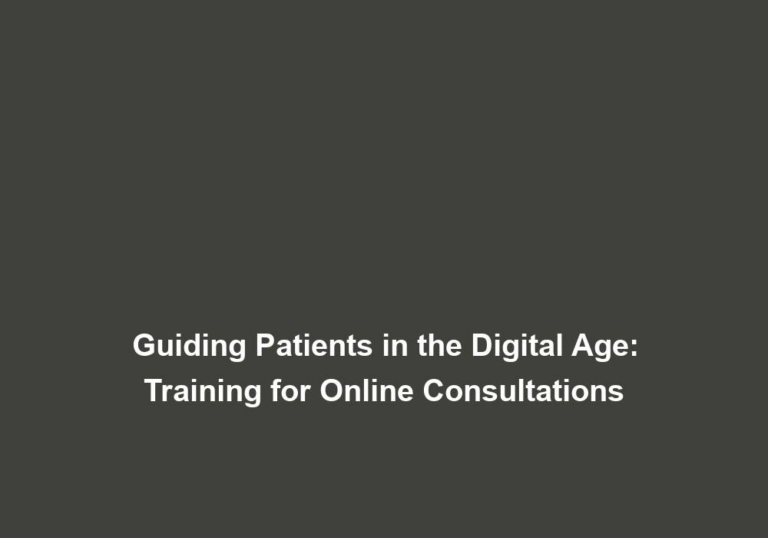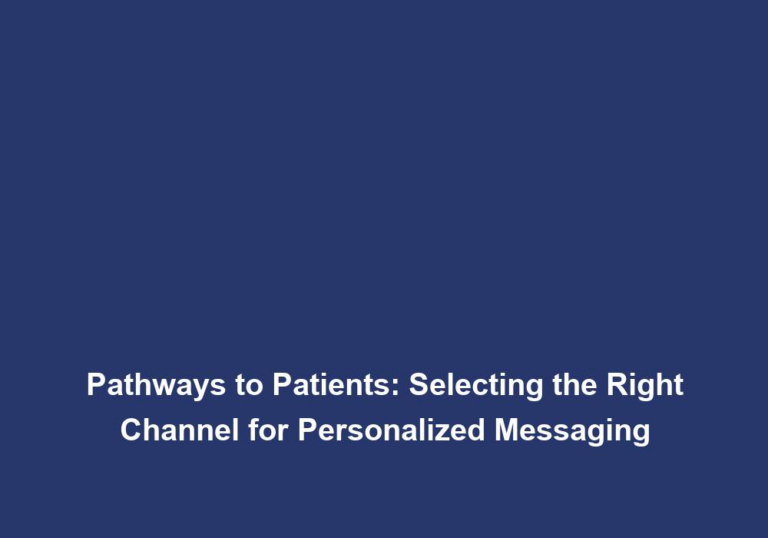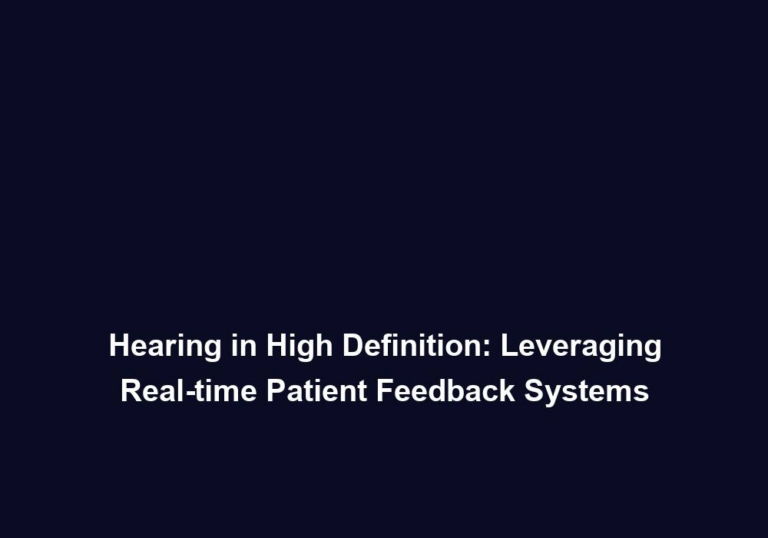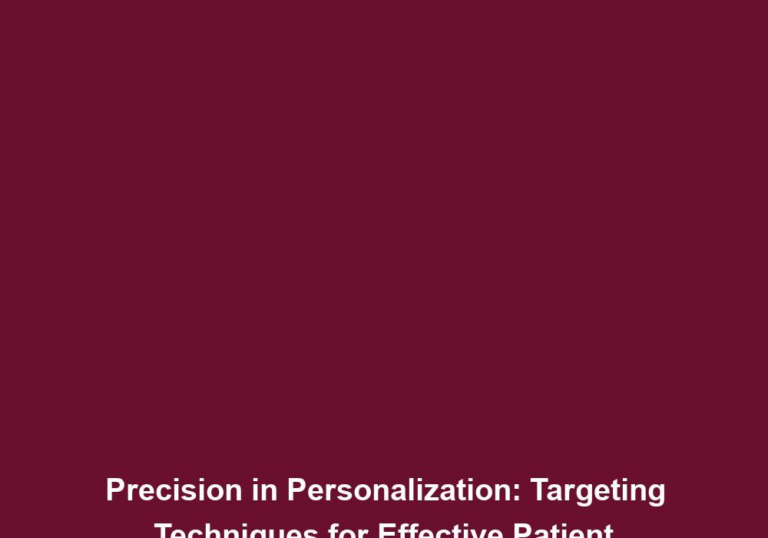Decoding Health: Elevating Patient Understanding through Health Literacy Initiatives
Health literacy plays a crucial role in empowering patients to make informed decisions about their health. With the complexities of modern healthcare, it is vital to bridge the gap between medical jargon and patient comprehension. This article explores the concept of health literacy and the importance of implementing a health literacy initiative to enhance patient understanding. By decoding health information, we can empower individuals to take control of their well-being and promote better healthcare outcomes.
Understanding Health Literacy
Health literacy refers to an individual’s ability to access, understand, evaluate, and apply health information to make informed decisions about their health. It encompasses various skills, including reading, writing, numeracy, and communication. Inadequate health literacy can lead to misunderstandings, poor adherence to treatment plans, and ultimately, negative health outcomes.
Health literacy is not only about the ability to read and understand medical information, but also about the capacity to critically evaluate and apply it. It involves being able to interpret medical jargon, navigate healthcare systems, and communicate effectively with healthcare providers. Without adequate health literacy, patients may struggle to understand their diagnoses, treatment options, medication instructions, and preventive measures.
The Need for a Health Literacy Initiative
- Improving Patient-Provider Communication: A health literacy initiative enhances communication between healthcare providers and patients. It encourages clear and concise information exchange, enabling patients to actively participate in their healthcare decisions.
Effective communication is the foundation of a positive patient-provider relationship. By promoting health literacy, healthcare professionals can ensure that patients understand their diagnoses, treatment plans, and any potential risks or side effects. This empowers patients to ask questions, express concerns, and actively engage in shared decision-making. Clear and open communication also helps to build trust, improve patient satisfaction, and enhance overall healthcare experiences.
- Reducing Health Disparities: Low health literacy disproportionately affects vulnerable populations, contributing to health disparities. By prioritizing health literacy, we can bridge this gap and ensure equitable access to healthcare information and services.
Health disparities are often influenced by social determinants of health, such as education, income, and race/ethnicity. Individuals with limited education or low socioeconomic status may face barriers to accessing and understanding health information. By implementing a health literacy initiative, healthcare organizations can develop culturally appropriate and accessible resources that cater to diverse populations. This helps to reduce health disparities and promote health equity for all individuals, regardless of their background or socioeconomic status.
- Empowering Patient Self-Advocacy: When patients possess the knowledge and skills to navigate the healthcare system, they become active participants in their care. A health literacy initiative empowers individuals to ask questions, seek clarification, and advocate for their health needs.
Health literacy is not just about receiving information; it is about being able to actively engage in healthcare decision-making. Patients who are health literate are better equipped to understand their rights, make informed choices, and voice their concerns. This self-advocacy can lead to improved healthcare experiences, increased patient satisfaction, and better health outcomes.
- Enhancing Patient Safety: Misunderstanding health information can have serious consequences. By promoting health literacy, we can minimize medication errors, improve adherence to treatment plans, and enhance overall patient safety.
Healthcare providers often rely on patients to follow treatment plans, take medications as prescribed, and understand warning signs. However, poor health literacy can hinder patients from fully comprehending and following these instructions. By implementing a health literacy initiative, healthcare organizations can provide clear and easy-to-understand educational materials, conduct medication counseling sessions, and use visual aids to enhance patient understanding. This reduces the risk of medication errors, improves treatment adherence, and ultimately enhances patient safety.
Key Components of a Health Literacy Initiative
A robust health literacy initiative should incorporate the following components:
1. Patient Education Materials
Developing patient-friendly educational materials is fundamental to health literacy. These materials should be written in plain language, free from medical jargon, and presented in a clear and organized manner. Utilizing visual aids, such as infographics or diagrams, can further enhance comprehension.
Patient education materials should be tailored to the specific needs and literacy levels of the target audience. They should provide step-by-step instructions, practical tips, and relevant examples to help patients understand complex health concepts. By using plain language and avoiding technical terms, healthcare organizations can ensure that their educational materials are accessible to individuals with varying levels of health literacy.
2. Clear Communication Strategies
Healthcare providers must adopt effective communication strategies to ensure patients understand their health information. This involves using clear and simple language, active listening, and providing opportunities for patients to ask questions or seek clarification. Additionally, using visual aids during consultations can facilitate understanding.
Clear communication is essential in healthcare settings to promote patient comprehension and engagement. Healthcare providers should avoid using medical jargon and instead use everyday language that patients can easily understand. Active listening skills, such as summarizing and clarifying information, can help confirm patient understanding and address any misconceptions. Visual aids, such as videos or diagrams, can supplement verbal explanations and improve patient comprehension.
3. Health Literacy Training for Healthcare Providers
Education and training programs focusing on health literacy should be provided to healthcare professionals. By equipping providers with the necessary skills, they can effectively communicate complex medical information to patients. These programs can cover topics such as plain language writing, active listening techniques, and cultural sensitivity.
Healthcare providers play a crucial role in promoting health literacy among patients. By receiving training on health literacy, providers can enhance their communication skills and become more proficient in explaining medical concepts to patients. Training programs can also help providers understand the cultural and linguistic needs of diverse patient populations, allowing them to tailor their communication strategies accordingly.
4. Collaborative Partnerships
Collaboration between healthcare organizations, community groups, and educational institutions is essential for a successful health literacy initiative. By working together, these stakeholders can develop and distribute resources, conduct workshops, and raise awareness about the importance of health literacy.
No single entity can address health literacy alone. Collaborative partnerships allow for the sharing of knowledge, expertise, and resources, resulting in more comprehensive and impactful health literacy initiatives. Healthcare organizations can collaborate with community groups to develop targeted educational materials and workshops that address the specific health needs of local populations. Educational institutions can contribute by integrating health literacy into their curricula and training future healthcare professionals.
5. Technological Advancements
Leveraging technology can greatly enhance health literacy initiatives. Digital platforms and mobile applications can provide interactive educational resources, health tracking tools, and personalized health information. Ensuring these technologies are user-friendly and accessible to individuals of varying digital literacy levels is crucial.
In today’s digital age, technology has the potential to revolutionize health literacy efforts. Digital platforms and mobile applications can deliver health information in innovative and engaging ways, making it more accessible and appealing to patients. These technologies can provide interactive quizzes, videos, and animations to reinforce key health concepts. Additionally, they can offer personalized health information based on individual preferences and health goals.
The Impact of a Health Literacy Initiative
Implementing a comprehensive health literacy initiative can yield numerous benefits:
- Improved Patient Outcomes: Patients who understand their health conditions, treatment options, and preventative measures are more likely to achieve positive health outcomes and actively engage in self-care.
When patients have a clear understanding of their health information, they are better equipped to manage their conditions, adhere to treatment plans, and make healthy lifestyle choices. This leads to improved health outcomes, reduced hospitalizations, and a higher quality of life. By promoting health literacy, healthcare organizations can empower patients to take control of their well-being and become active participants in their healthcare journey.
- Enhanced Shared Decision-Making: Health literacy empowers patients to actively participate in shared decision-making with their healthcare providers. This collaborative approach improves patient satisfaction and fosters a sense of ownership over one’s health.
Shared decision-making involves a partnership between patients and healthcare providers, where both parties contribute their expertise and perspectives. Health literacy enables patients to understand the risks, benefits, and alternatives of different treatment options, allowing them to make informed decisions that align with their values and preferences. This shared decision-making process enhances patient satisfaction, improves treatment adherence, and strengthens the patient-provider relationship.
- Reduced Healthcare Costs: By promoting health literacy, unnecessary hospitalizations, emergency room visits, and healthcare costs can be minimized. When patients are well-informed, they make informed choices, reducing the burden on the healthcare system.
Limited health literacy can contribute to avoidable healthcare utilization and increased healthcare costs. Patients with low health literacy may delay seeking care, misunderstand preventive measures, or misuse medications, leading to preventable complications and hospitalizations. By investing in health literacy initiatives, healthcare organizations can reduce unnecessary healthcare utilization, alleviate the strain on healthcare resources, and ultimately lower healthcare costs.
- Health Equity: A health literacy initiative promotes health equity by ensuring that everyone, regardless of their educational background or socioeconomic status, can access and understand vital health information.
Health literacy is a social determinant of health that affects individuals across various socioeconomic backgrounds. By implementing a health literacy initiative, healthcare organizations can address disparities in access to health information and services. By developing culturally appropriate and accessible resources, healthcare organizations can empower individuals from diverse backgrounds to actively participate in their healthcare, promoting health equity and reducing health disparities.
Conclusion
Decoding health through a health literacy initiative is vital for patient empowerment and better healthcare outcomes. By adopting patient-centered communication strategies, developing patient-friendly educational materials, and fostering collaborative partnerships, we can bridge the gap between medical jargon and patient understanding. Health literacy is the key to unlocking a world where individuals are active participants in their healthcare journey, leading to improved health outcomes and a more equitable healthcare system.







